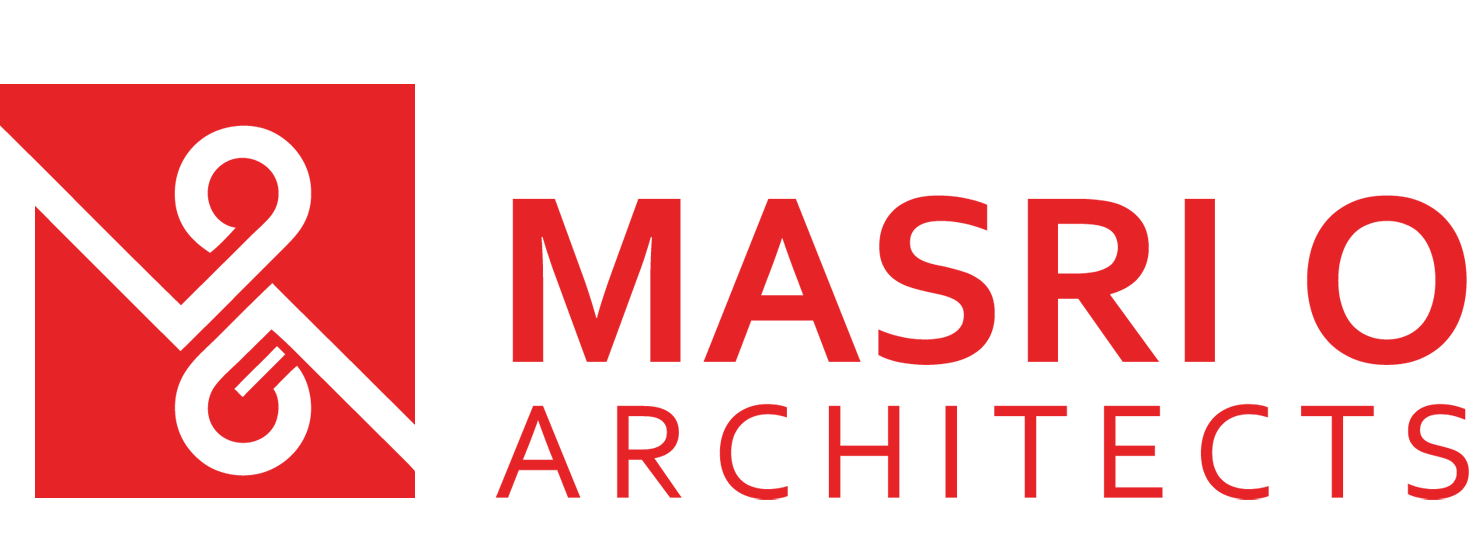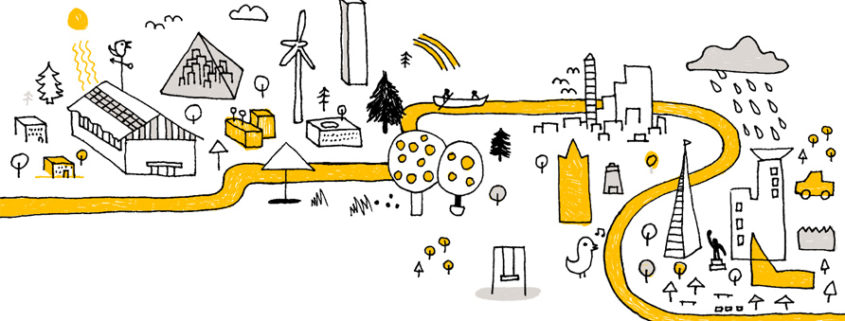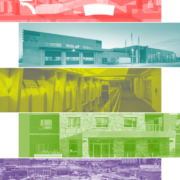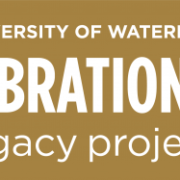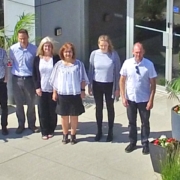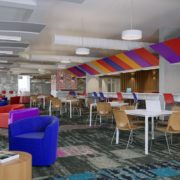MORe – City of the Future
Masri O is thrilled to be a part of a project that was recently discussed in the Spring 2017 University of Waterloo Magazine under the heading of “transformational research”. The following is the content of the article:
IMAGINE HOUSES THAT GENERATE ALL THE ENERGY THEY CONSUME
By Brian Caldwell, illustrations by Ben Weeks
Smart village set to rise on one-time urban brownfield
The prediction among architects is that changes to building codes in Canada will require all new homes to generate as much energy as they consume by the year 2030.
 Paul Parker has a simple, pointed question: why wait? Building so-called net-zero homes is already possible and economically feasible. Parker is eager to help make it happen, on a substantial scale, sooner rather than later.
Paul Parker has a simple, pointed question: why wait? Building so-called net-zero homes is already possible and economically feasible. Parker is eager to help make it happen, on a substantial scale, sooner rather than later.
The University of Waterloo environment professor and a team of researchers and graduate students are part of a redevelopment project that will lay the groundwork for a “smart village” with several hundred residential units and commercial space on a former industrial site near downtown Guelph.
“We have all the technologies,” says Parker, an associate dean as well as a cross-appointed professor in two departments at Waterloo’s Faculty of Environment. “Let’s prove we can do it now.”
How to achieve net-zero energy use via better building materials, solar panels, heat pumps and other innovations is a recommendation expected to come out of an eight-month research project undertaken this year by Parker and a team of colleagues and graduate students at the Waterloo Institute for Sustainable Energy.
 The team was invited by developer ARQi R&D Inc. — headed by Amer Obeidi, an adjunct engineering professor at Waterloo — to research ideas, practices and case studies from around the world and identify innovative and sustainable technologies and designs to be incorporated into the development.
The team was invited by developer ARQi R&D Inc. — headed by Amer Obeidi, an adjunct engineering professor at Waterloo — to research ideas, practices and case studies from around the world and identify innovative and sustainable technologies and designs to be incorporated into the development.
“It’s all about quality of living rather than maximizing square footage,” says Parker.
The 13-acre property owned by the City of Guelph is one of the highest-profile brownfield sites in the city. Brownfield lands typically have varying levels of contamination caused by past industrial use. In this case, the land was long home to the International Malleable Iron Co., but may be best known as the one-time home of an unorthodox church known for its ritual use of marijuana and occasional nudism.
The site has been sitting unused since the city took it over for unpaid taxes in 1998. But last year, ARQi expressed interest in redeveloping the land as an “urban village.” An agreement was reached involving the developer, the city and the local chapter of Habitat for Humanity.
The concept put forward by ARQi — and supported by Parker’s team, the city and Masri O Architects — would see the land revitalized as a modern, vibrant, environmentally sustainable neighbourhood, with a mix of housing, office and retail space.
“It’s a simple story of a city that would like to do something better than normal and a developer wanting to do something better than normal,” Parker says.
Early ideas from the Waterloo team, which also involves four master’s students and environmental professors Goretty Dias and Maurice Dusseault, include on-site collection and treatment of rainwater, garbage disposal, geothermal options and simple but effective touches like community gardens to provide fresh produce and help create a strong sense of community.
Given an opportunity to help nudge the future into the here and now, Parker is looking forward to going by the completed development in five years or so and knowing his team had a hand in shaping it.
“We want to bring the best ideas in the world to our local community,” he says. “We want this to become the norm rather than the exception.”
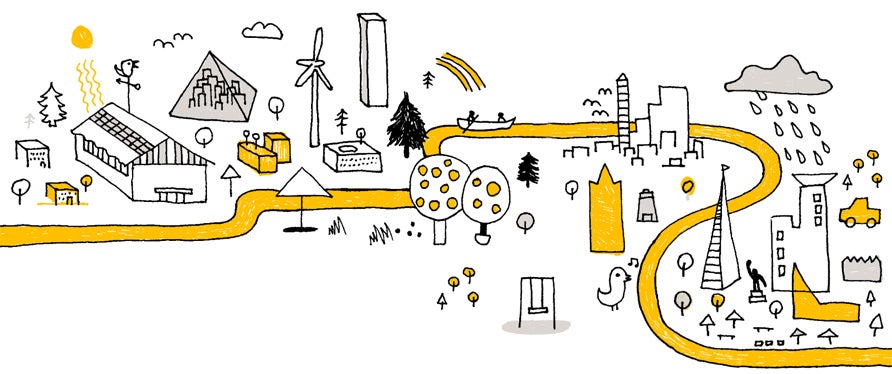
11 things smart communities have in common
Professor Paul Parker is helping to build a smart village that will serve as a model for future communities. We asked him what elements make a city “smart.”
1. Smart Governance: local input digital democracy, e-services
2. Smart Citizens: knowledgeable, creative and proactive
3. Smart Energy: ICT grid technologies, integrated policies (reduce demand, add renewable supply)
4. Smart Buildings: metering, monitoring and control, net zero energy systems
5. Smart Mobility: ICT infrastructure for motorized mobility, encourages walking, biking, e-commuting
6. Smart Technology: ICT advanced communication, internet of things, decision support
7. Smart Health and Safety: personal and public features at home and institutions
8. Smart Water Management: efficient consumption, rainwater collection
9. Smart Waste Management: minimize material waste, compost organics
10. Smart Landscape Design: spaces, gardens, artificial wetlands/ecosystem services, encourage social interaction
11. Smart Equity / Inclusion: diverse groups, mixed social and market housing, social interaction to build social capital
